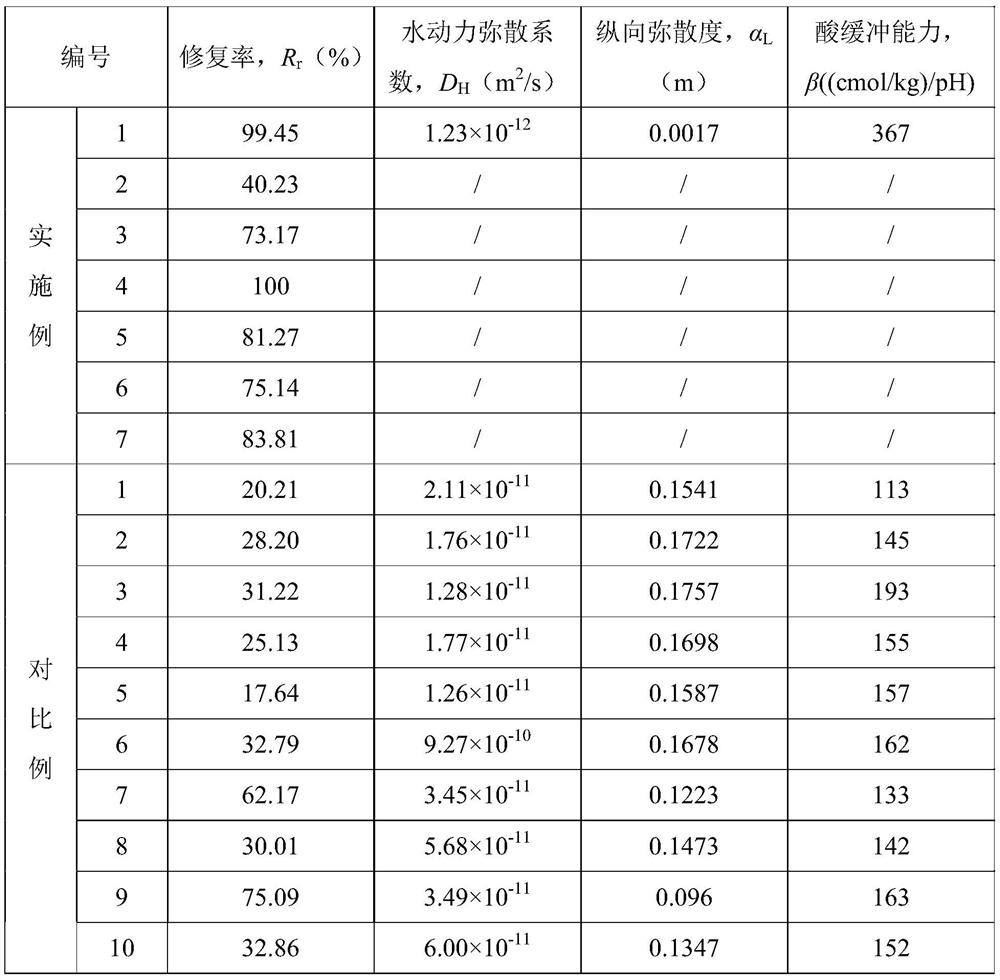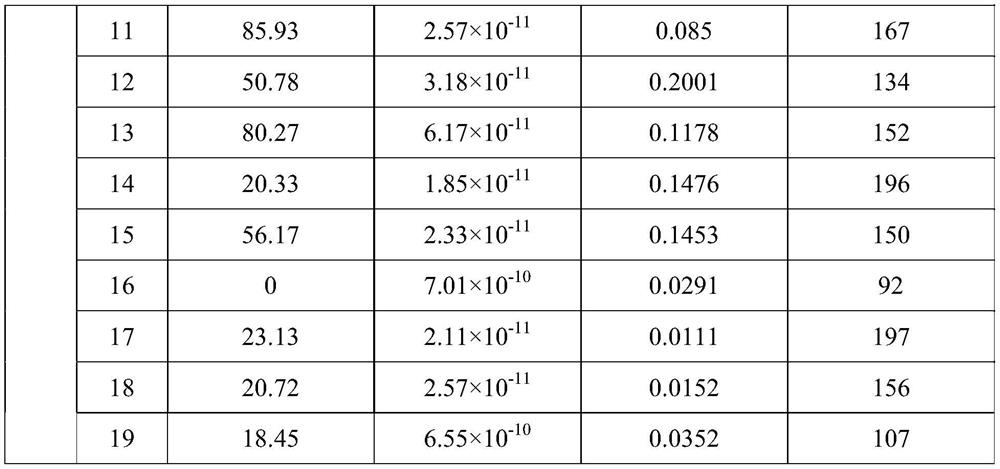A kind of soil remediation agent and its preparation method and its application in reducing arsenic pollution
A restoration agent and arsenic-contaminated technology, which is applied in the fields of environmental engineering, geotechnical engineering and hydrogeological engineering, can solve the problems of poor sustainability of restoration agents, high consumption, poor restoration effect of arsenic-contaminated soil, etc., and reduce the hydrodynamic dispersion coefficient , Strong acid-base buffering ability, superior repairing effect
- Summary
- Abstract
- Description
- Claims
- Application Information
AI Technical Summary
Problems solved by technology
Method used
Image
Examples
Embodiment 1
[0029] The repairing agent is a homogeneous powder mixture composed of red mud (50% by mass), iron fulvic acid (40% by mass), and sodium iron EDTA (10% by mass). One is dissolved in waste acid produced by titanium dioxide (solid-to-liquid ratio is 1:1) to obtain slurry mixture II, and then the drying mixture II is mixed with phosphogypsum in a mass ratio of 3:1 to obtain.
[0030] Red mud is aluminum-containing waste slag produced by the Bayer process for producing alumina, and is processed by the following method: red mud powder with a particle size of less than 75 μm is dried at 105-125 ° C until the moisture content is lower than 2.3%.
[0031] The content of iron oxide in iron fulvic acid is 5%.
[0032] The content of iron oxide in sodium iron ethylenediaminetetraacetic acid is 14.7%.
[0033] The slurry mixture was dissolved with the aid of microwave, and then stood at room temperature for 18 hours.
[0034] The second drying step of the slurry mixture is: placing the ...
Embodiment 2
[0037] The preparation process and maintenance process of the remediation soil sample in Example 1 are the same, except that the dosage of the remediation agent is 2% (accounting for the dry weight of the contaminated soil).
Embodiment 3
[0039] The preparation process and maintenance process of the repaired soil sample in Example 1 are the same, except that the dosage of the repairing agent is 4% (accounting for the dry weight of the contaminated soil).
PUM
| Property | Measurement | Unit |
|---|---|---|
| particle diameter | aaaaa | aaaaa |
| particle diameter | aaaaa | aaaaa |
| particle diameter | aaaaa | aaaaa |
Abstract
Description
Claims
Application Information
 Login to View More
Login to View More - R&D
- Intellectual Property
- Life Sciences
- Materials
- Tech Scout
- Unparalleled Data Quality
- Higher Quality Content
- 60% Fewer Hallucinations
Browse by: Latest US Patents, China's latest patents, Technical Efficacy Thesaurus, Application Domain, Technology Topic, Popular Technical Reports.
© 2025 PatSnap. All rights reserved.Legal|Privacy policy|Modern Slavery Act Transparency Statement|Sitemap|About US| Contact US: help@patsnap.com


